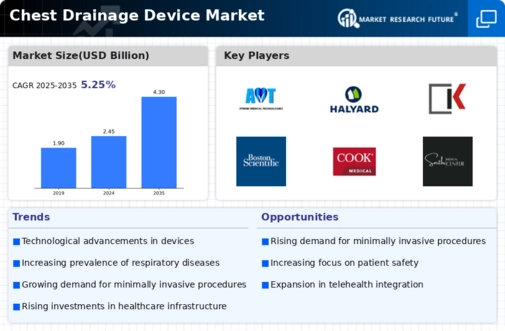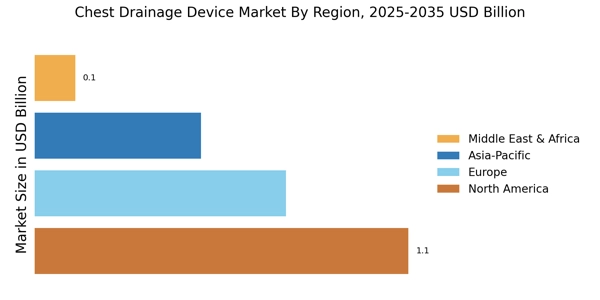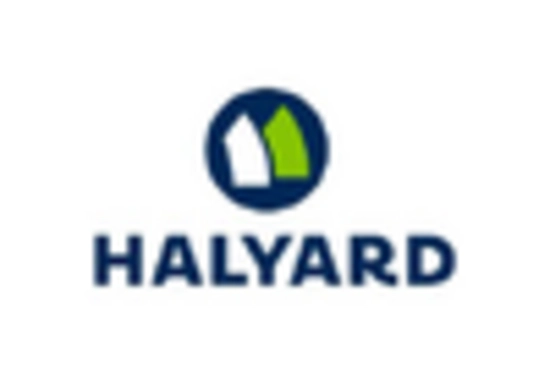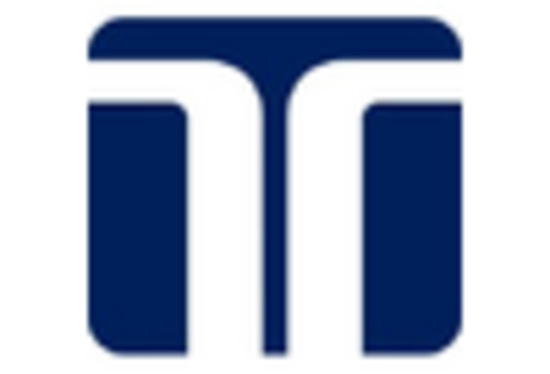Rising Geriatric Population
The growing geriatric population is a critical factor influencing the Chest Drainage Device Market. Older adults are more susceptible to various health conditions, including those requiring chest drainage interventions. As the demographic of individuals aged 65 and above continues to expand, healthcare systems are compelled to adapt their services to meet the needs of this population. Reports indicate that the elderly are more likely to experience complications that necessitate the use of chest drainage devices, thereby driving demand. This demographic shift suggests that the Chest Drainage Device Market will likely see increased investment and innovation aimed at catering to the unique requirements of older patients.
Surge in Surgical Procedures
An increase in surgical procedures, particularly thoracic surgeries, is significantly impacting the Chest Drainage Device Market. As surgical techniques advance and become more prevalent, the need for effective chest drainage solutions post-surgery becomes paramount. Data indicates that the number of thoracic surgeries performed annually is on the rise, leading to a corresponding demand for chest drainage devices to manage post-operative complications. This trend underscores the importance of these devices in surgical settings, suggesting that the market will continue to expand as surgical practices evolve and the need for reliable drainage solutions becomes more pronounced.
Technological Innovations in Device Design
Technological advancements in the design and functionality of chest drainage devices are propelling the Chest Drainage Device Market forward. Innovations such as digital monitoring systems, improved suction mechanisms, and user-friendly interfaces enhance the efficacy and safety of these devices. For instance, the integration of smart technology allows for real-time monitoring of fluid levels and pressure, which can significantly reduce complications associated with traditional devices. As healthcare facilities increasingly prioritize patient safety and operational efficiency, the adoption of these advanced devices is likely to rise. This trend indicates a shift towards more sophisticated chest drainage solutions, thereby expanding the market's potential.
Growing Awareness and Training in Healthcare
The increasing awareness and training regarding the use of chest drainage devices among healthcare professionals is a vital driver for the Chest Drainage Device Market. Enhanced educational programs and training initiatives are equipping medical staff with the necessary skills to effectively utilize these devices, thereby improving patient care. As healthcare providers recognize the importance of proper drainage management, the demand for high-quality chest drainage devices is likely to rise. This trend indicates a positive shift towards better clinical practices, which may further stimulate growth within the Chest Drainage Device Market as more facilities adopt these essential tools.
Increasing Prevalence of Respiratory Diseases
The rising incidence of respiratory diseases, such as pneumonia and chronic obstructive pulmonary disease, is a notable driver for the Chest Drainage Device Market. As these conditions often necessitate the use of chest drainage devices for effective management, the demand for such devices is likely to increase. According to recent health statistics, respiratory diseases account for a significant portion of global morbidity and mortality, leading to a heightened need for medical interventions. This trend suggests that healthcare providers are increasingly investing in advanced chest drainage solutions to improve patient outcomes. Consequently, the Chest Drainage Device Market is expected to experience substantial growth as healthcare systems adapt to the growing burden of respiratory illnesses.


















Leave a Comment